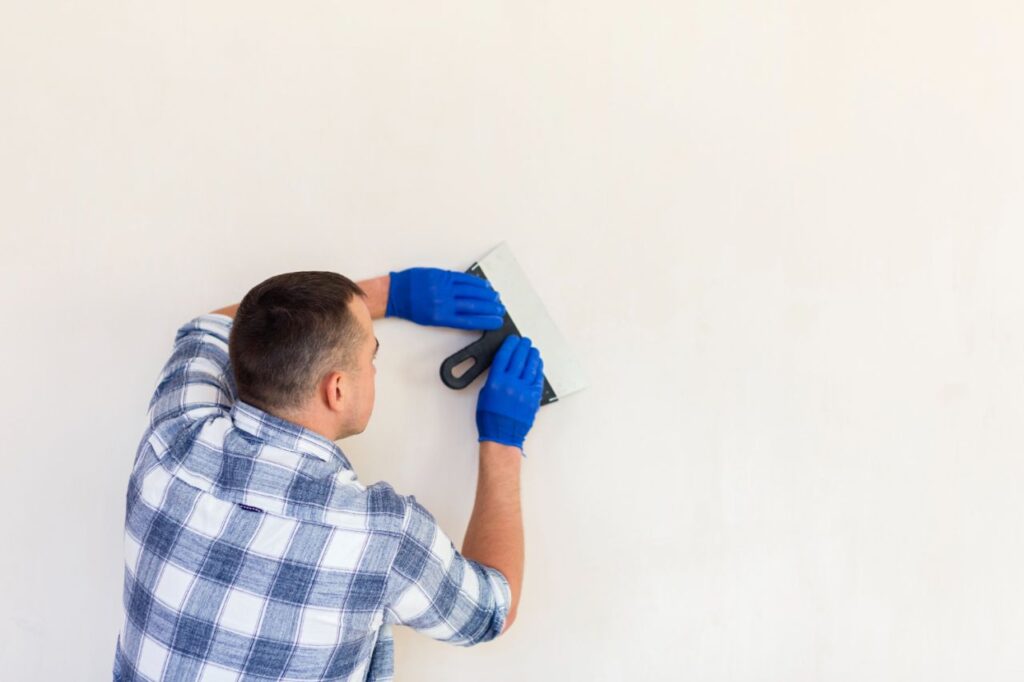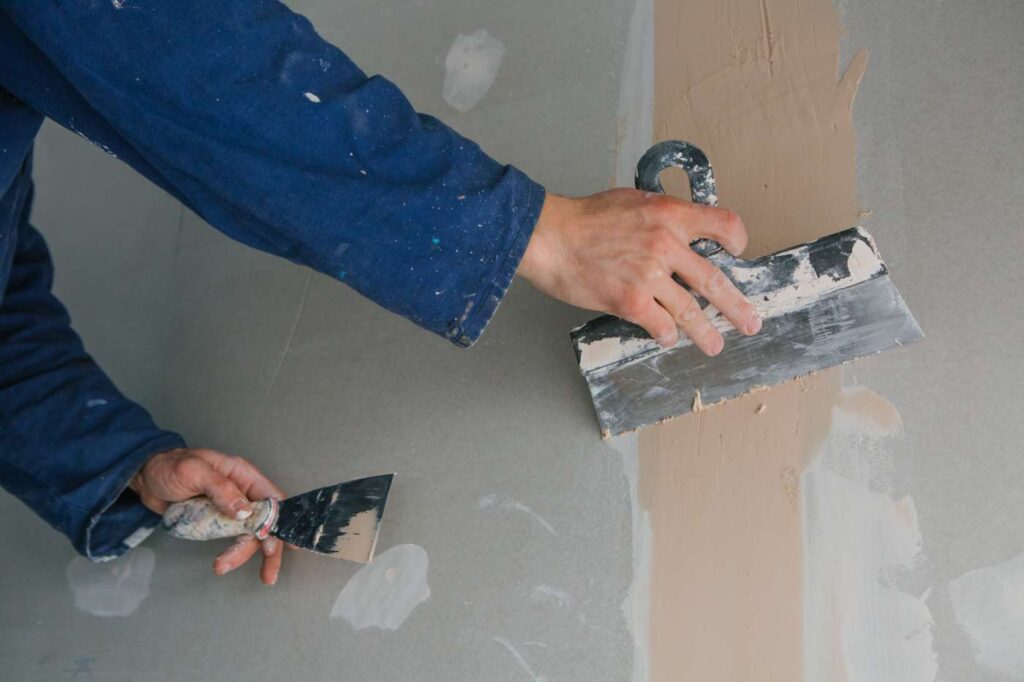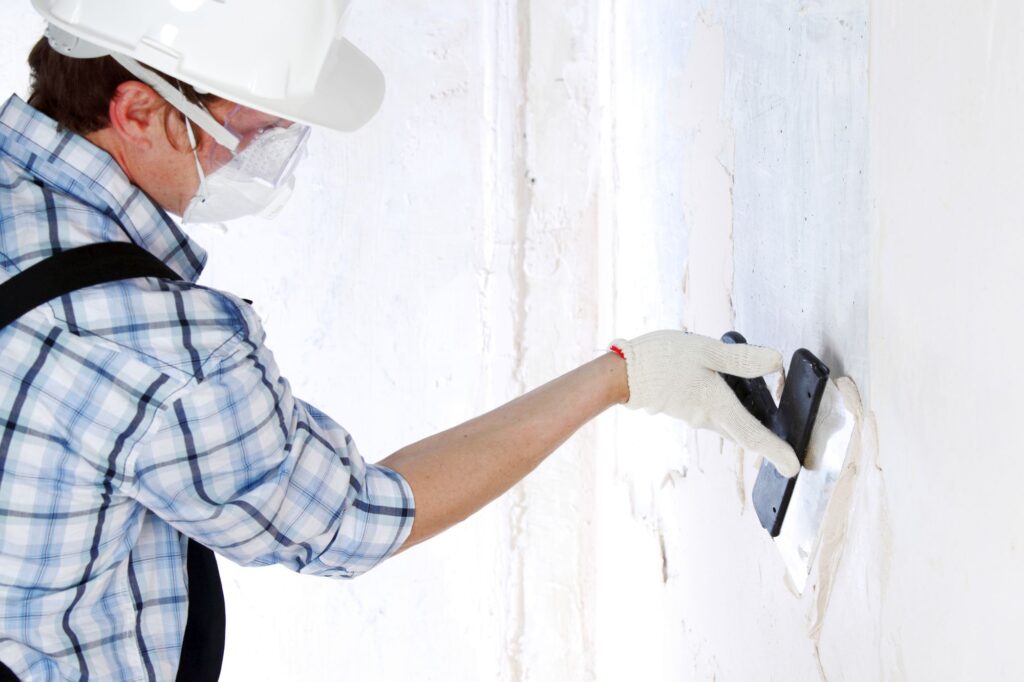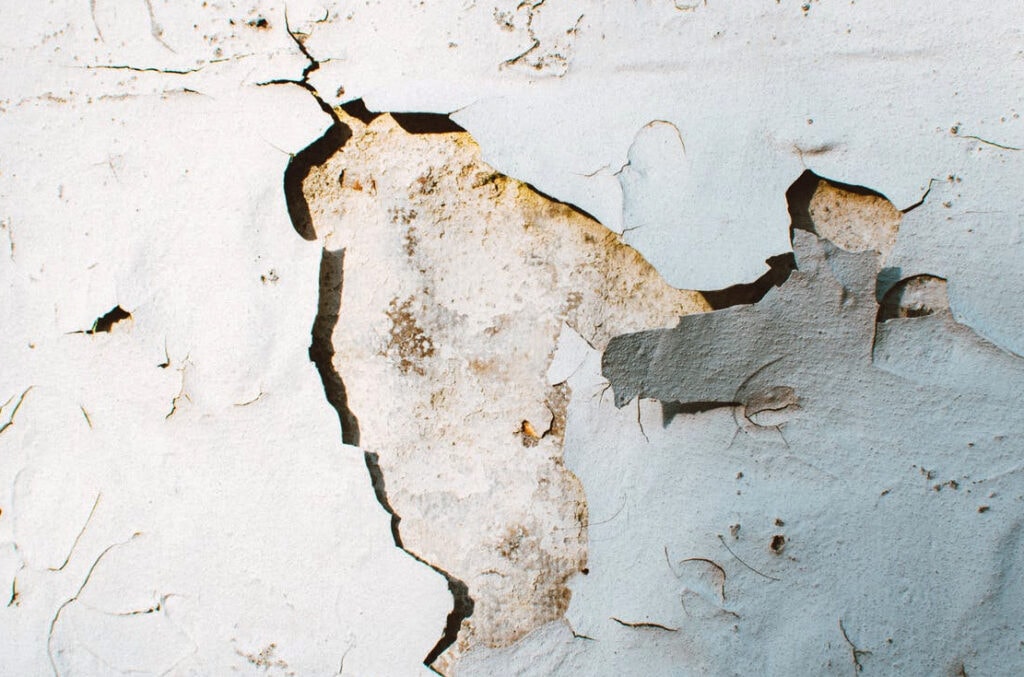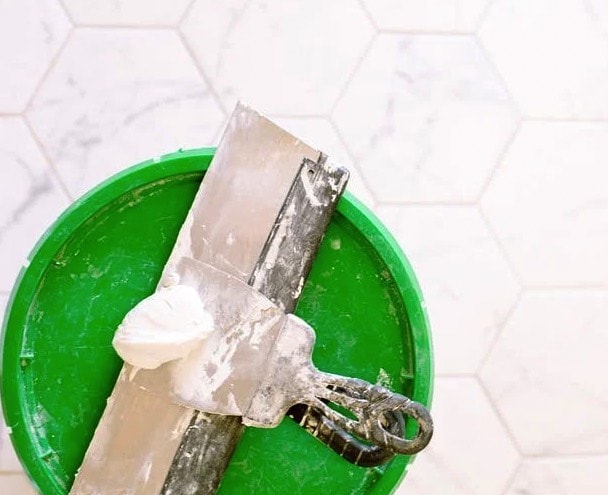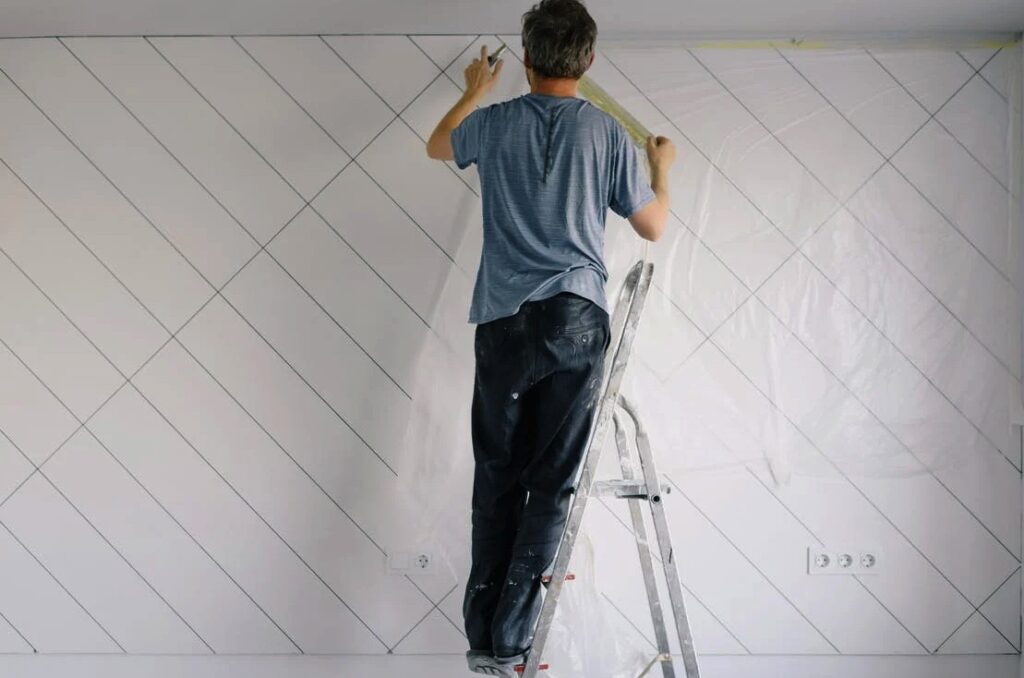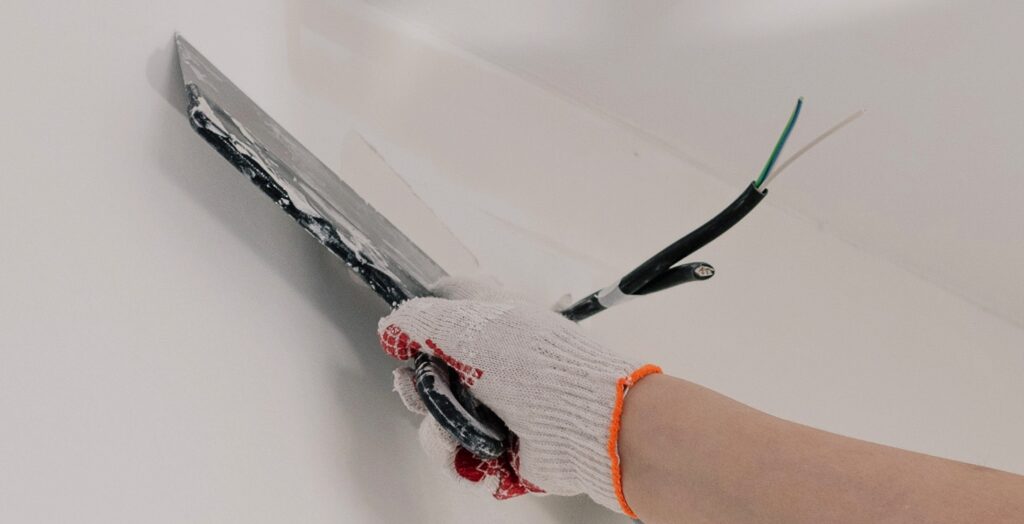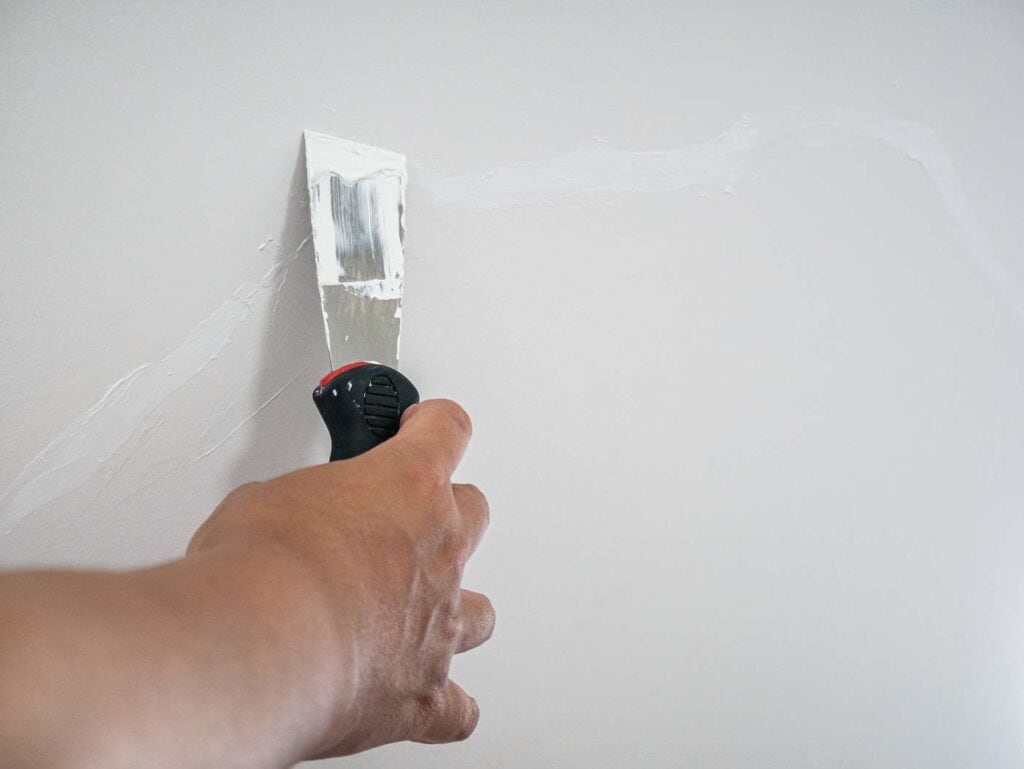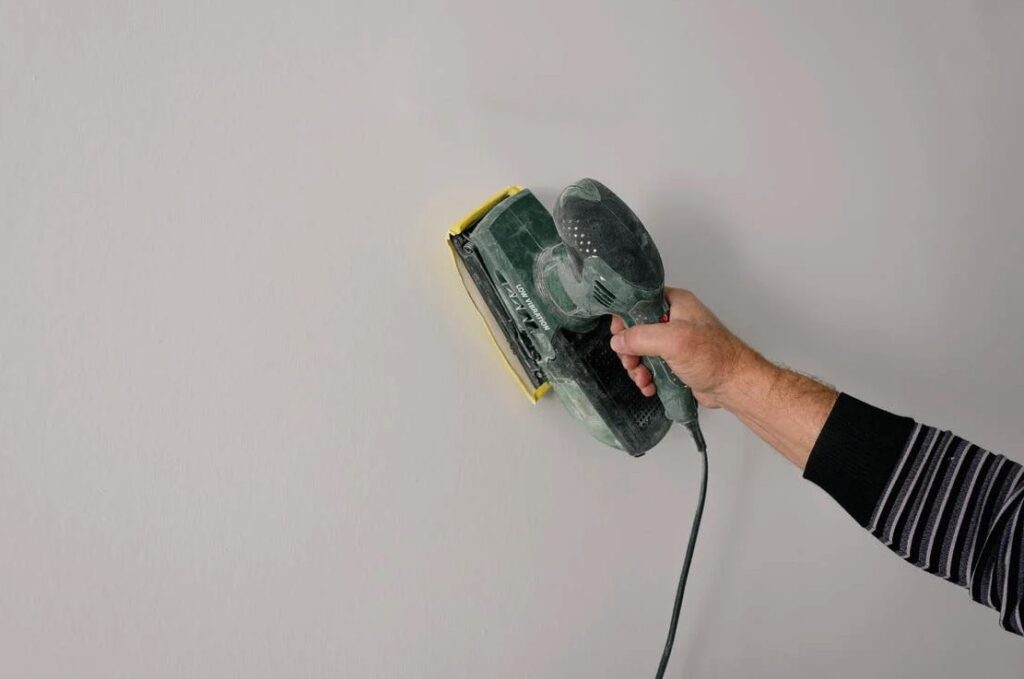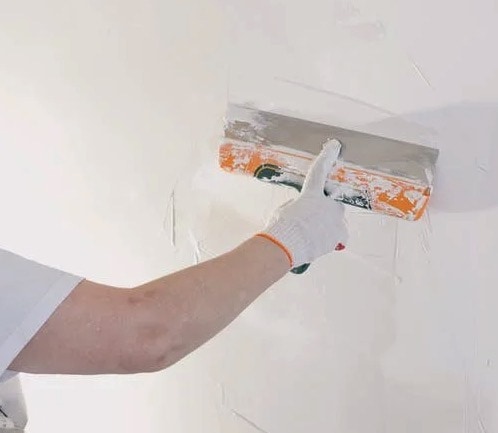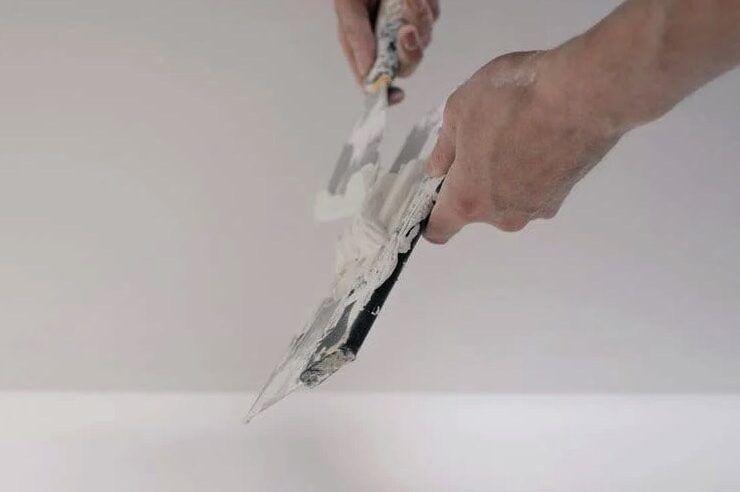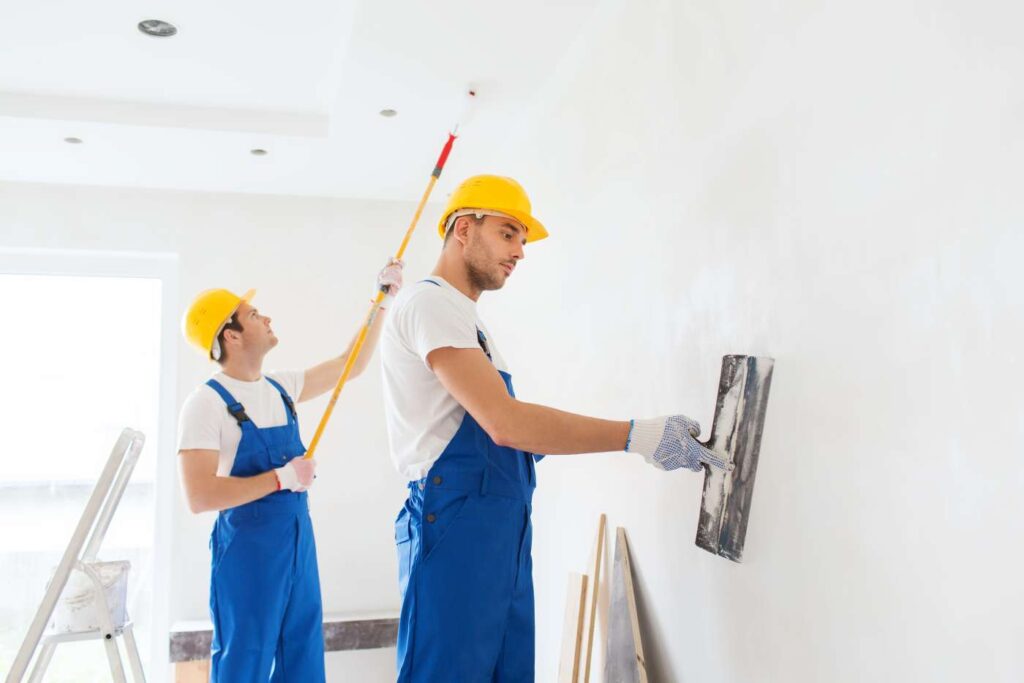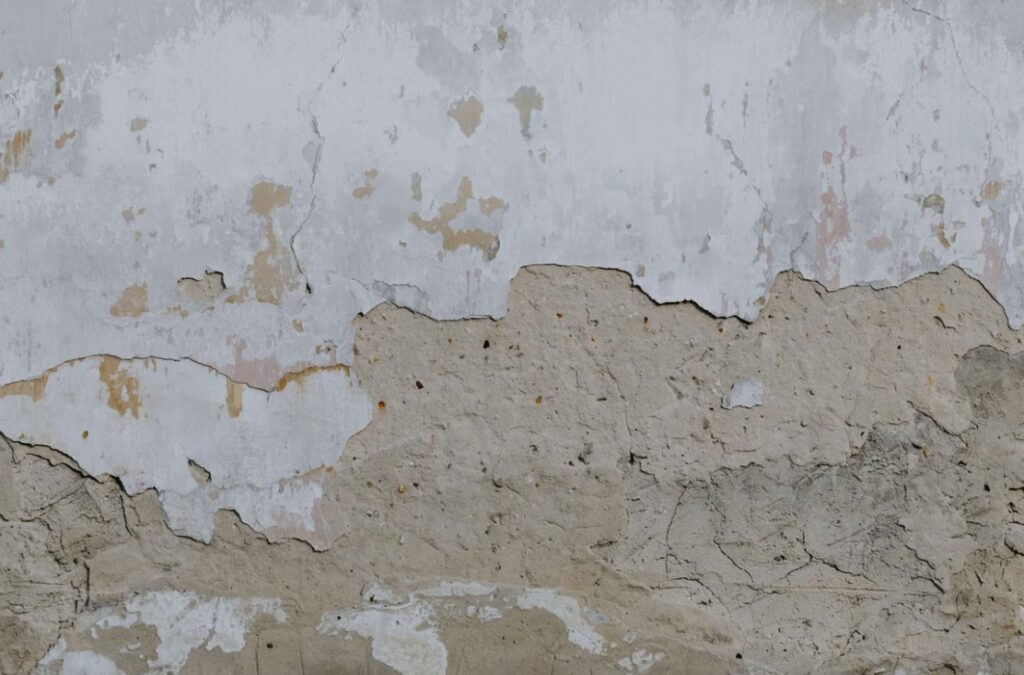When trying to minimise ambient noise levels, soundproofing is always a top priority. Soundproofing is useful whether you want to silence the outside world in your home or create a tranquil recording studio.
Plastering is a tried-and-true method of soundproofing that has been around for quite some time. In this article, we will discuss the best practices for soundproofing a space with plaster.
We'll talk about what you'll need, how to get it ready, and how to apply it. We will also discuss some common pitfalls that you should try to avoid when soundproofing your home. Your knowledge of plastering and its role in soundproofing will increase by the end of this article, and you'll be ready to tackle the job on your own.
What is Soundproofing?
Sound waves are a kind of energy that propagates through the air.
Sound waves propagate away from their origin in all directions because they produce vibrations in the molecules of air. These changes in pressure travel through the air until they encounter an object, such as our ears. Sound waves are capable of penetrating a variety of materials, including air, water, and solids.
Sound waves' velocities and intensities are affected by a number of variables.
These include the sound's frequency, the medium it travels through, and the distance it must travel.
Sound waves can be either transmitted through or reflected by a wall, or absorbed by the wall, depending on the wall's material and construction.
When it comes to sound transmission, walls that are thin and lightweight, like drywall or a partition, are the worst offenders.
Yet, because to its mass and density, a thick and heavy wall, such one made of brick or concrete, will be more effective at stopping sound transmission.
The purpose of soundproofing is to minimise or eliminate noise transfer between rooms. Soundproofing is the process of preventing unwanted noise from entering or leaving a space by using various materials and methods.
Because of the detrimental effects that noise pollution can have on our well-being, soundproofing is a necessity.
Distracting noise has been linked to stress, insomnia, and permanent hearing loss. If you live in a busy area or have loud neighbours, soundproofing your home or office can help you relax and enjoy your surroundings more.
Noise can be a distraction or even a health hazard in business and manufacturing settings, making soundproofing a necessity. Soundproofing, in general, contributes to a more pleasant and productive home or office setting.
How Plastering Can Help With Soundproofing
Plastering helps with soundproofing because it adds heft to walls, which dampens sound waves.
Plasterboard, often known as drywall or gypsum board, is widely used as a soundproofing material due to its ability to absorb and diffuse sound waves.
Plasterboard is frequently used in recording studios, home theatres, and other areas where noise reduction is crucial since, when installed correctly, it can inhibit sound transmission by as much as 70%.
Plastering can be made more soundproof by incorporating additional materials, such as acoustic plaster or sound-absorbing sealant, in addition to plasterboard.
These components are meant to improve the walls' already impressive soundproofing capabilities, making them an even more formidable obstacle to noise pollution.
Plastering, because it allows you to add mass and sound-dampening materials to your walls, is an efficient method for soundproofing because it greatly reduces the amount of noise that enters or leaves a room.
Common Soundproofing Methods
Most often used techniques for soundproofing a space or structure include:
Wall Insulation
The quantity of noise that can be heard through walls is diminished when they are insulated with mineral wool or fibreglass. A room can be effectively and cheaply soundproof by installing insulation in the walls.
Soundproof Curtains
They are substantial drapes that may be drawn over a window or door to block out unwanted noise. Installing soundproof drapes is a simple and inexpensive solution to quiet down a room.
Acoustic Panels
Acoustic panels are commonly utilised in recording studios and home theatres due to their ability to absorb sound waves. These can be mounted on the ground, the ceiling, or the wall according to the desired effect.
Double Glazing
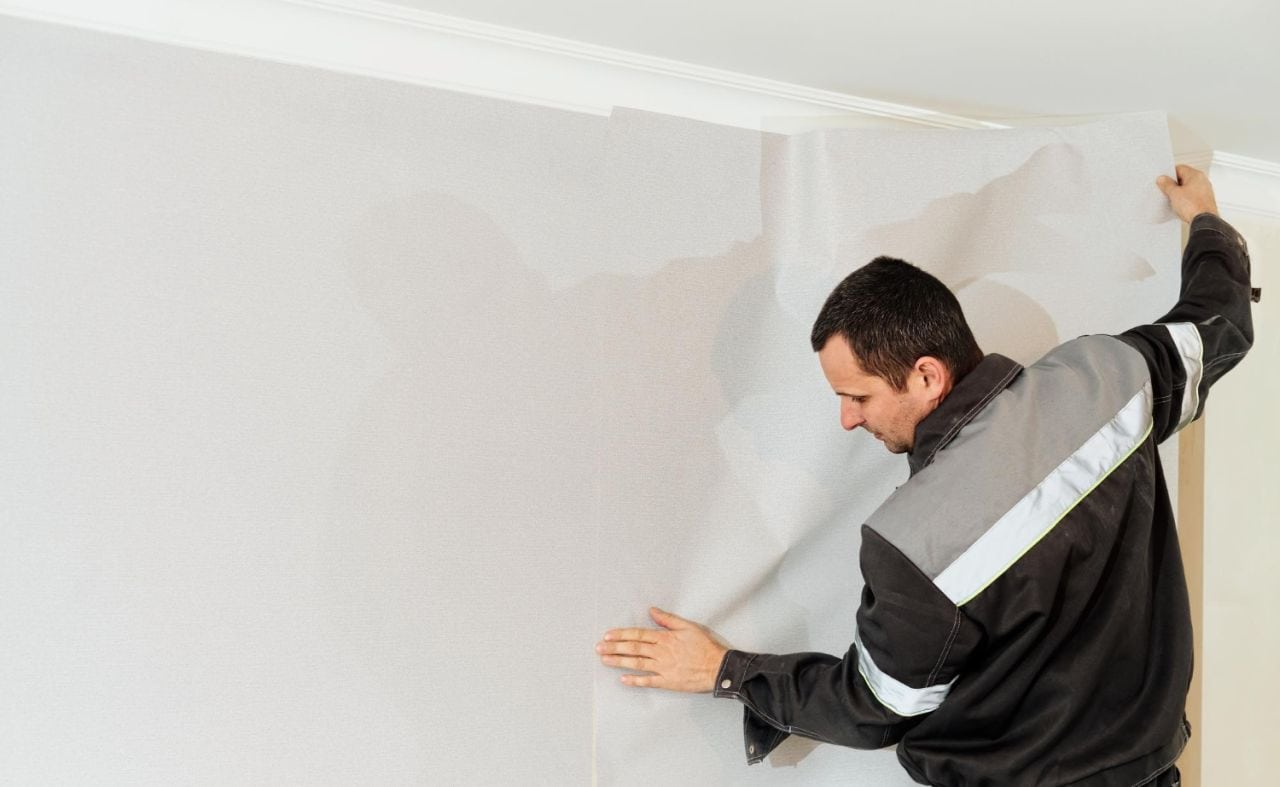
When two panes of glass are installed in a window frame with an air space in between them, the process is known as "double glazing." The air space between them serves as a soundproofing measure, allowing for lower ambient noise levels.
Soundproof Plasterboard
Plasterboard, a typical building material, can be utilised to reduce noise transmission via walls. There is soundproof plasterboard on the market that is more effective at blocking out noise than standard plasterboard.
Resilient Channels
Before affixing the drywall to the studs, resilient channels (metal strips) are inserted. By acting as a barrier between the plasterboard and the wall, they lessen the amount of noise that travels through the wall.
The degree of noise, the type of building, and the available money all play a role in determining which of these solutions is the best fit. Several soundproofing strategies can be used in tandem to get optimal results.
Preparing for Plastering
The degree of noise, the type of building, and the available money all play a role in determining which of these solutions is the best fit. Several soundproofing strategies can be used in tandem to get optimal results.
Clean the Wall
Plastering a wall requires that it be clear of dust, dirt, and other particles that could damage the plaster. You can clean the wall with a stiff brush and a moist towel to get rid of any lingering grime.
Check for Cracks and Holes
Before applying plaster, check the wall for damage and make the necessary repairs. The efficiency of soundproofing is diminished if there are any openings in the wall through which sound can travel.
Apply a Primer
Priming the wall prior to applying plaster improves adhesion and results in a more uniform coating. The amount of water a wall absorbs during the plastering process can be affected by using a primer.
Install Soundproofing Material
It is important to follow the manufacturer's directions while setting up soundproofing materials like acoustic plaster or sound-absorbing sealant.
Apply the Plaster
Plaster can be applied after the wall has been prepared by cleaning, repairing, and priming. Apply the plaster evenly to the wall using a trowel, starting at the top and working your way down. If necessary, apply a second coat of plaster and smooth down any bumps or ridges as you go.
The effectiveness of the soundproofing and the adhesion of the plaster to the wall can both be improved by giving the wall a thorough preparation beforehand. Wearing protective clothing and working in a well-ventilated space are two examples of essential safety measures to take.
Plastering Techniques for Soundproofing
Plastering for soundproofing can be done in a number different ways, each with its own potential for success. Some methods of plastering to think about are as follows:
Double Layering
Applying two coats of plaster to a wall is a common and efficient method. Applying a light base coat and letting it dry completely is the first step. After the first coat has dried, a second one can be brushed on as thinly as possible. This method of using two layers to block sound is more successful than using only one.
Soundproof Plaster
Mineral fibres, perlite, and vermiculite are just a few examples of the sound-absorbing ingredients that can be found in soundproof plaster. The amount of noise that can penetrate the wall is diminished. Plaster that blocks out noise is put in much the same way as conventional plaster.
Sealant
Another useful method is using acoustic sealant on the wall. Any cracks or openings in the wall, as well as the areas surrounding light switches and plugs, should be sealed. With the sealant, we can lessen the amount of noise that gets through those cracks and crevices.
Mass Loaded Vinyl (MLV)
The walls can be prepared for plastering by first applying mass loaded vinyl, a dense yet flexible material. It can be stuck in place to dampen noise and serves its purpose. Plaster can be put over the top once everything is in place.
Resilient Channels
In addition to plastering, resilient channels can be utilised to dampen noise. Plasterboard is protected from damage by metal channels fastened to the studs before the plaster is applied. The amount of noise that is transmitted through a wall may be diminished if this is done.
These plastering methods allow for a stronger sound barrier to be built. Carefully consider your scenario before deciding on a method, and always use protective gear when dealing with plaster.
Tips for Effective Soundproofing
Reducing the quantity of outside and internal noise is a primary goal when soundproofing a room. Soundproofing is useful whether you live in a big city, have noisy neighbours, or simply desire a quieter home. Some suggestions for efficient soundproofing are as follows.
- Before beginning soundproofing, it is vital to locate the origin of the noise. By doing so, you can find out which methods of soundproofing work best. Where does that sound seem to be coming from, inside or outside? Is it coming from above, below, or through the walls? The best methods of soundproofing can be selected when the source of the noise has been identified.
- Blocking sound waves with bulk is an efficient strategy for reducing noise transfer. Adding more drywall or insulation to the walls, ceilings, and floors can accomplish this. Vinyl with extra bulk added to it can also be used to dampen noise.
- Even a tiny hole or crack in the wall, ceiling, or floor can let a lot of unwanted noise in. Sealant, foam, or acoustic caulk should be used to fill in these spaces and cracks before proceeding with soundproofing.
- A room's reverberation time can be lowered by using sound-absorbing materials like acoustic panels, curtains, or foam. This has the potential to lessen the effects of echo and reverberation and make for a more acoustically pleasing environment.
- Doors and windows are typically the weakest places in a room's soundproofing, thus it's important to have soundproof doors and windows. The amount of noise entering or leaving a space can be reduced by installing soundproof doors and windows. Curtains or blinds that absorb sound well are another option for reducing noise seepage via windows.
- Sound transmission through walls and ceilings can be decreased by installing resilient channels. In order to prevent the drywall from touching the studs, these metal channels are fastened to the studs beforehand.
- If the noise is originating from below, soundproofing the floor can be an efficient technique to limit sound transmission. Floating floors, acoustic underlay, and the addition of mass to the floor can all help with this.
- While white noise and sound machines aren't exactly soundproofing, they can help to hide unpleasant noise and create a more serene atmosphere. Those who have problems sleeping because of noise may find these devices particularly useful.
In conclusion, achieving optimal soundproofing involves a tailored combination of methods.
Locating the origin of the noise and employing a mix of mass, sealing, absorption, and channeling strategies can result in a quieter, more peaceful environment.
When installing soundproofing materials, it's important to keep safety in mind at all times and get expert advice if you have any doubts.
Conclusion

The term "soundproofing" refers to the practise of sealing off an area to prevent noise from leaking in or out.
Soundproofing with plaster has been around for quite some time and has been proven effective. Soundproofing a room with plaster is covered in detail, along with tips on how to avoid common mistakes.
Sound waves are a form of energy that travels through the air and, depending on the wall's material and construction, can either pass through the wall or be reflected off of it. The goal of soundproofing is to reduce or eliminate echoing and reverberation from one room to another.
Noise pollution has been linked to increased stress, disturbed sleep patterns, and even permanent hearing loss, making soundproofing an absolute necessity.
Plastering can aid in soundproofing by giving walls more mass and therefore reducing the transmission of sound waves. The walls can be made more soundproof by adding materials like acoustic plaster or a sound-absorbing sealant.
Plastering is an effective soundproofing technique because it blocks sound waves before they can enter or exit a space. Insulating walls, installing soundproof curtains or panels, using double-paned windows or glass, using soundproof plasterboard, and installing resilient channels are all common methods of soundproofing.
Preparing the wall in advance can increase its effectiveness as a sound barrier and as a surface for plaster to adhere to. Double-layering, soundproof plaster, sealant, mass-loaded vinyl, and resilient channels are just a few of the plastering techniques available.
Working in a well-ventilated area while donning protective gear are two of the most important safety precautions you can take.
Double layering, soundproof plaster, sealant, mass loaded vinyl, and resilient channels are just a few of the plastering techniques available. Working in a well-ventilated space while donning protective gear is also crucial.
Locating the source of the noise, blocking sound waves with bulk, filling in holes and cracks, using sound-absorbing materials, installing soundproof doors and windows, installing resilient channels, and soundproofing the floor are the most crucial steps in soundproofing a room.
Sound machines and other sources of white noise can be used to mask background noise and create a calmer environment.
Finding the source of the noise and deciding on an appropriate soundproofing method should come first.
Content Summary
- When trying to minimise ambient noise levels, soundproofing is always a top priority.
- Your knowledge of plastering and its role in soundproofing will increase by the end of this article, and you'll be ready to tackle the job on your own.
- Because of the detrimental effects that noise pollution can have on our well-being, soundproofing is a necessity.
- If you live in a busy area or have loud neighbours, soundproofing your home or office can help you relax and enjoy your surroundings more.
- Noise can be a distraction or even a health hazard in business and manufacturing settings, making soundproofing a necessity.
- Soundproofing, in general, contributes to a more pleasant and productive home or office setting.
- Plastering helps with soundproofing because it adds heft to walls, which dampens sound waves.
- These components are meant to improve the walls' already impressive soundproofing capabilities, making them an even more formidable obstacle to noise pollution.
- A room can be effectively and cheaply soundproof by installing insulation in the walls.
- Installing soundproof drapes is a simple and inexpensive solution to quiet down a room.
- Plasterboard, a typical building material, can be utilised to reduce noise transmission via walls.
- There is soundproof plasterboard on the market that is more effective at blocking out noise than standard plasterboard.
- By acting as a barrier between the plasterboard and the wall, they lessen the amount of noise that travels through the wall.
- The degree of noise, the type of building, and the available money all play a role in determining which of these solutions is the best fit.
- Several soundproofing strategies can be used in tandem to get optimal results.
- Plastering a wall requires that it be clear of dust, dirt, and other particles that could damage the plaster.
- Priming the wall prior to applying plaster improves adhesion and results in a more uniform coating.
- Plaster can be applied after the wall has been prepared by cleaning, repairing, and priming.
- Apply the plaster evenly to the wall using a trowel, starting at the top and working your way down.
- The effectiveness of the soundproofing and the adhesion of the plaster to the wall can both be improved by giving the wall a thorough preparation beforehand.
- Plastering for soundproofing can be done in a number different ways, each with its own potential for success.
- Applying two coats of plaster to a wall is a common and efficient method.
- Another useful method is using acoustic sealant on the wall.
- The walls can be prepared for plastering by first applying mass loaded vinyl, a dense yet flexible material.
- In addition to plastering, resilient channels can be utilised to dampen noise.
- Reducing the quantity of outside and internal noise is a primary goal when soundproofing a room.
- Before beginning soundproofing, it is vital to locate the origin of the noise.
- The best methods of soundproofing can be selected when the source of the noise has been identified.
- Adding more drywall or insulation to the walls, ceilings, and floors can accomplish this.
- Doors and windows are typically the weakest places in a room's soundproofing, thus it's important to have soundproof doors and windows.
- The amount of noise entering or leaving a space can be reduced by installing soundproof doors and windows.
Frequently Asked Questions About Plasterering
Plaster is more expensive than gypsum. Cement and cement lime plaster are cheaper alternatives. The substance used is chlorine, which is highly toxic in its pure form.
White cement is not the same as plaster; it has a different consistency. The former, made of gypsum, is used to make casts for medical purposes (such as when repairing a fracture), while the latter is put on walls to make them shine.
Many people fear working with plaster because of its inherent dangers. Though it is not dangerous in the right hands, the substance is generally considered safe for everyday use. Anything embedded in the plaster runs the risk of being trapped and subjected to extreme heat.
Plaster is the best option for repairing gaps in plaster walls because its properties are more likely to match the wall material. Plaster isn't often used to repair drywall, but it does a great job of reinforcing interior walls.
When you want to clean your Venetian plaster walls, all you have to do is wipe them down. In order to lengthen the life of walls, routine maintenance such as cleaning and sealing is recommended.
